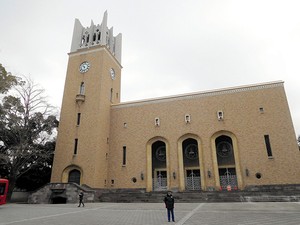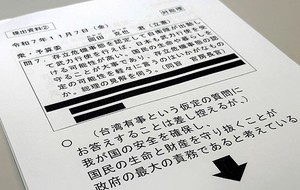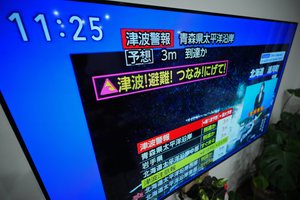By KAZUYA GOTO/ Staff Writer
January 16, 2025 at 16:30 JST
 Medical staff care for a critically ill patient late on Jan. 5, 2021, at Fujimino Emergency Hospital in Miyoshi, Saitama Prefecture. (Naoko Kawamura)
Medical staff care for a critically ill patient late on Jan. 5, 2021, at Fujimino Emergency Hospital in Miyoshi, Saitama Prefecture. (Naoko Kawamura)
More than 130,000 people in Japan have died from COVID-19 since the first confirmed case five years ago, the health ministry said.
The figure is for the period between Jan. 15, 2020, and last August.
The ministry noted that there were 44,000 fatalities, accounting for one-third of total COVID-related deaths, since the novel coronavirus was downgraded to the same category as seasonal influenza in May 2023, which led to eased restrictions on social activities.
Published vital statistics as of last August show that 141 individuals under the age of 20 were among the 132,000 COVID-19 deaths with 295 in their 20s and 30s, and 3,006 in their 40s and 50s.
Notably, 100,720 fatalities--76% of the total--were among those aged 80 and older.
The Alpha variant, which spread in spring 2021, and the Delta variant, which followed in the summer, severely impacted younger people.
That year, COVID-19 deaths among those under 65 accounted for 11 percent of the total.
However, since 2022, when vaccines became widely available and the Omicron variant became dominant, deaths among those under 65 dropped to about 3 percent of the total.
In 2020, around 96 percent of deaths occurred in hospitals, but since 2022, one in four deaths has been reported at home, in care facilities, nursing homes or other locations.
In May 2023, health authorities downgraded COVID-19 to Category 5 under the infection disease prevention law.
This did away with a requirement for doctors to submit the number of patients they diagnose with COVID-19. Instead, around 5,000 designated medical institutions now report cases.
Since the downgrading, the number of cases per institution has fallen, but the number of hospitalized patients remains steady at 3,000 to 4,000.
“The high number of hospitalized patients suggests that there may also be a substantial number of undiagnosed asymptomatic or mild COVID cases,” said Norio Omagari, director of the Disease Control and Prevention Center under the National Center for Global Health and Medicine that was tasked with dealing with the crisis.
“Although it has become harder to grasp the overall picture of the outbreak, the scale is probably still quite large,” Omagari said.
The healthcare system no longer finds itself overwhelmed as medical facilities have proper infection prevention measures in place.
However, at the individual patient level, the impact can sometimes be significant.
“COVID-19 often takes a heavy toll on the elderly, leading to significant physical decline and weakness,” Omagari said. “It’s a disease that can drastically change their way of life.”
Many elderly couples, after contracting COVID-19 and becoming weaker, find it difficult to continue living on their own and begin searching for a care facility.
“COVID-19 remains an infectious disease that has a significant impact on public health,” health minister Takamaro Fukuoka said at a news conference on Jan. 14.
“We urge everyone to continue practicing basic infection prevention measures such as hand hygiene and cough etiquette,” he said.




















A peek through the music industry’s curtain at the producers who harnessed social media to help their idols go global.
A series based on diplomatic documents declassified by Japan’s Foreign Ministry
Here is a collection of first-hand accounts by “hibakusha” atomic bomb survivors.
Cooking experts, chefs and others involved in the field of food introduce their special recipes intertwined with their paths in life.
A series about Japanese-Americans and their memories of World War II